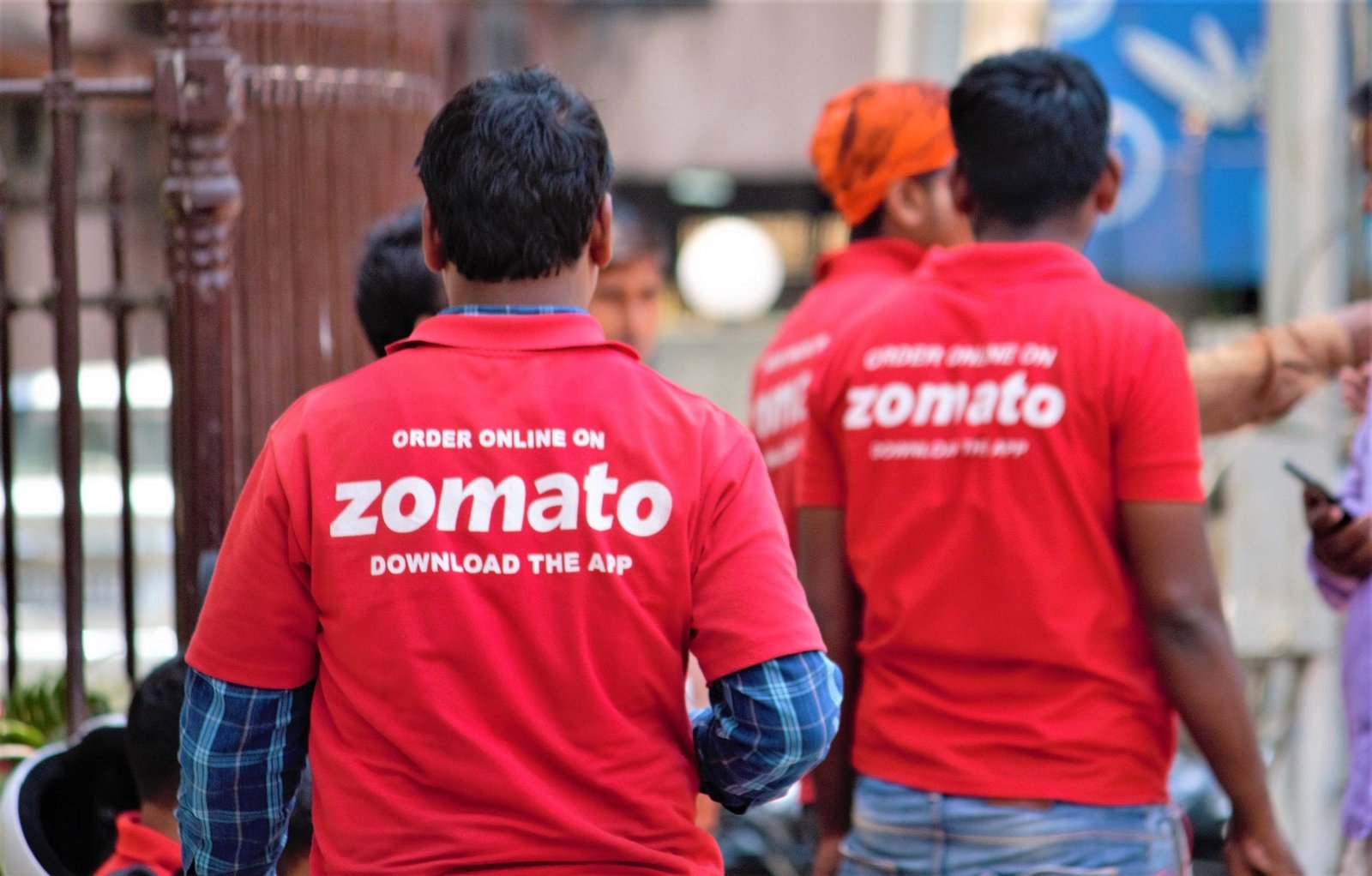Startup
‘Not raising money for aggressive discounting’: Zomato CFO

“We’re not raising money to start discounting more,” says Zomato’s finance chief Akshant Goyal, speaking about the company’s proposal to raise about $1 billion dollars.
“I think we could do what is right for the business first. And we don’t think therefore discounting is going to help our business at this point in time,” Goyal further added during the company’s post-earnings call.
While the final timeline and amount for the fundraise hasn’t been finalised yet and still needs shareholder approval, Zomato is looking to raise somewhere along the range of $1 billion subject to market conditions in a bid to strengthen its balance sheet.
Growth beyond metros
The foodtech major is focusing on increasing its quick commerce offerings with a wider assortment and increased penetration. It said it was on track to open 1,000 dark stores by the end of the financial year, and 1,000 more by the end of 2026.
Blinkit pared its market share in NCR regions from 47% to less than 40% as it tries to focus on building out markets beyond Delhi-NCR. It claims to currently be the largest player by gross order value (GOV) in all major metro cities outside of Chennai and Hyderabad.
Albinder Dhindsa-led Blinkit has been rapidly expanding across the country, especially in Tier II towns. While opening a single store in various cities can show market expansion, it is crucial to understand how many stores can be profitably operated within a city.
Therefore, the city count may not be the right indicator of the depth of this market at this point beyond the top eight cities, as Zomato is “still scratching the surface of the addressable market in the city”, according to Zomato executives.
“While we have seen success in most of the markets that we’ve gone into so far, but our immediate focus in terms of building out the infrastructure and business remains in the top eight cities because we still believe that is underserved from a supply standpoint,” noted Goyal.
Pricey quick commerce expansion
While the segment more than doubled its revenue to Rs 1,156 crore, the growth hasn’t been cheap, with reduced margins and take rates for Blinkit.
The margin has been impacted due to the fixed costs associated with opening new stores, which include expenses for staff and rent. It takes time for these stores to become operational. As a result, there hasn’t been any expansion in the contribution margin over the past two to three quarters, primarily due to ongoing expansion efforts, noted Akshant Goyal.
“Majority of the impact that you’re seeing (on take-rates) is because of the higher velocity of new store openings. So when we open a new store, typically it takes time to ramp up. So the take rates increase over time. So the mix of new stores is increasing. That’s why you see a little bit of decrease in the overall take rates,” noted Blinkit’s Albinder Dhindsa.
Moreover, the quick commerce operator said it does not see any impact on the throughput of existing stores with the launch of new dark stores. Blinkit plans to continue its building backend and customer infrastructure for high traction categories like beauty, electronics and toys.
In terms of future plans for the quick commerce arm, there are no loyalty programs and private labels on the card right now but the company said it will continue to evaluate all models.
Food Delivery and Stepping Out
On the food delivery front, peers in the space are expecting the segment to take a hit as food delivery is perceived as more of a discretionary spending. While Zomato hasn’t seen any impact from the general economic consumption slowdown, it plans to keep an eye out, noted Goyal.
Its food delivery segment—which continues to be its largest vertical—witnessed lower growth as compared to the last two quarters at just a 21% rise in the reporting quarter vs a 27% YOY rise in Q1 and a 28% rise in Q4FY24.
For its going out business, Zomato plans to focus on transitioning its dining out business and new ticketing business to the District app, at least for the foreseeable future. It is currently planning to launch the District app in the next four weeks.
On a consolidated basis, The Gurgaon-based company reported 68.5% higher operating revenue in Q2FY25 at Rs 4,799 crore. While, its profit narrowed on a QoQ basis to Rs 176 crore, from Rs 253 crore it clocked in the previous quarter.
Startup
Thesys secures $4M funding led by Together Fund

AI startup Thesys bags $4 million funding in a round led by Together Fund. The round also saw participation from 8VC, the company said in a statement.
The startup will use the funding to bridge the gap of user experience with AI agents. As a visual collaboration tool, the company will also provide a platform that will enable businesses to ideate, visualise, and ship intelligent experiences at scale.
“The way we engage with technology is changing faster than ever. Static interfaces simply don’t meet the demands of today’s AI-capabilities…At Thesys, we’re building tools that make it possible for businesses to adapt and thrive in this new era,” said Parikshit Deshmukh, Co-founder, Thesys.
This evolution is about unlocking the full potential of AI-driven interactions and delivering unparalleled user experiences, he added.
“The future of AI relies as much on intuitive, adaptive interfaces as it does on backend capabilities. Thesys’ vision for Generative UI aligns perfectly with Together Fund’s commitment to enabling founders who are redefining the user experience,” said Manav Garg, Co-founder and managing partner of Together Fund.
“By empowering teams to create real-time, personalized interactions, Thesys is setting a new standard for AI-driven interfaces. We’re excited to support their journey in transforming the role of design and development tools for the next generation of AI applications,” he added.
The company, founded by Rabi Shanker Guha and Parikshit Deshmukh this year, emerged from the understanding of the need to provide support in the shift towards AI-driven interfaces, it said.
“Thesys envisions a future where all interfaces dynamically adjust to each user’s behavior, preferences, and needs—driven by what the company calls “Generative UI”. Unlike traditional static interfaces that rely on predefined paths, Generative UI uses AI to create unique, adaptive user interfaces on-the-fly, allowing businesses to provide truly personalized digital experiences,” the company added.
The company plans to launch a UI SDK that is set to enable developers to seamlessly integrate Generative UI into their applications. Additionally, post its closed beta launch, the company plans a general availability (GA) with its product within the next quarter positioning itself as the go-to product toolkit for businesses looking to stay ahead in the AI revolution.
“Thesys is pioneering a transformative shift in UI design workflows by integrating AI-driven adaptability… Their Generative UI approach aligns with our commitment to investing in technologies that drive innovation in user experiences,” said Bhaskar Ghosh, partner at 8VC.
Startup
BrowserStack launches AI-driven Low Code Automation tool

Software testing platform has rolled out Low Code Automation, a solution to simplify test automation for quality assurance teams, developers, and non-technical users.
The newly launched solution will address challenges faced by software teams, including manual testing delays and complex automation frameworks, BrowserStack said in a statement.
While traditional test automation requires coding expertise by often limiting non-technical testers to contribute, this tool allows user—irrespective of their technical background—to create and manage AI-driven automated tests without writing code. Users can also use BrowserStack’s cloud infrastructure for reliable test execution.
“(The AI-powered Low-Code Automation (LCA) simplifies the process of building and maintaining test automation suites compared to traditional tools like Selenium. It reduces the steep learning curve and complexity often associated with automation projects, leading to a quicker return on investment (ROI),” Chintan Doshi, Director of Product Management at BrowserStack, told YourStory.
To support development teams worldwide, Low Code Automation speeds up testing cycles, boosts product quality, and enhances user experience by reducing technical barriers.
“Citizen testers—such as business analysts, product managers, and customer support teams—can easily add validations and create automated tests with the test recorder, without requiring coding skills. This reduces their dependency on developers and QAs and empowers them to actively contribute to testing efforts,” Doshi explained.
Founded in 2011 by Ritesh Arora and Nakul Aggarwal, BrowserStack provides a cloud-based platform for developers to test websites and mobile apps across devices, operating systems, and browsers on demand.
With headquarters in San Francisco and Mumbai, the company has expanded its product line to include over 15 products, of which 10 were launched in the past 18 months.
In August, the Accel-backed firm acquired Berlin-based Bird Eats Bug, an advanced bug-reporting tool. The acquisition aims to address the existing gaps in bug reporting and streamline fragmented testing workflows.
Startup
Flipkart’s delivery arm Instakart reports widening losses, lower revenue in FY24

Flipkart’s delivery service arm Instakart’s FY24 losses increased multifold to Rs 1718.4 crore, from Rs 324.6 crore in the previous year, hurt by higher expenses and marginally lower revenues.
The company, which is in the logistics, warehouse, courier and allied services business, clocked an operating revenue of Rs 12,115.3 crore in FY24, 5% lower than Rs 12,787.4 crore it posted a year ago, according to filings made with Toefler.
During the period, the company’s total expenses increased 6% to Rs 14,149.4 crore, mainly driven by employee benefit and other expenses.
Logistics services accounted for the majority (about 78%) of Instakart’s total operating revenues, with Rs 9,429.8 crore, marginally lower than what it collected in the previous year.
Warehousing services, which accounted for about 10% of total operating revenues, witnessed a 28.4% drop in revenue, while collection services, which accounted for 12%, remained stable.
Just a week ago, Flipkart Internet reported a 21% rise in FY24 revenue at Rs 17,907.3 crore helped by rising income from its advertising services.
Flipkart India Ltd, which is Flipkart’s business-to-business (B2B) arm, reported a 26.4% rise in revenue from operations at Rs 70,541.9 crore in FY24.
-

 Startup Stories1 year ago
Startup Stories1 year agoWhy Millennials, GenZs Are Riding The Investment Tech Wave In India
-

 Startup Stories1 year ago
Startup Stories1 year agoStartups That Caught Our Eyes In September 2023
-

 Startup Stories1 year ago
Startup Stories1 year agoHow Raaho Is Using Tech To Transform India’s Fragmented Commercial Trucking
-

 Startup Stories12 months ago
Startup Stories12 months agoMeet The 10 Indian Startup Gems In The Indian Jewellery Industry’s Crown
-

 Crptocurrency8 months ago
Crptocurrency8 months agoLither is Making Crypto Safe, Fun, and Profitable for Everyone!
-

 Startup Stories1 year ago
Startup Stories1 year agoHow Volt Money Is Unlocking The Value Of Mutual Funds With Secured Lending
-

 Startup Stories1 year ago
Startup Stories1 year agoWhy Moscow-Based Kladana Considers Indian SME Sector As The Next Big Market For Cloud Computing
-

 E-commerce1 year ago
E-commerce1 year agoTop Online Couponing Trends To Watch Out For In 2016




